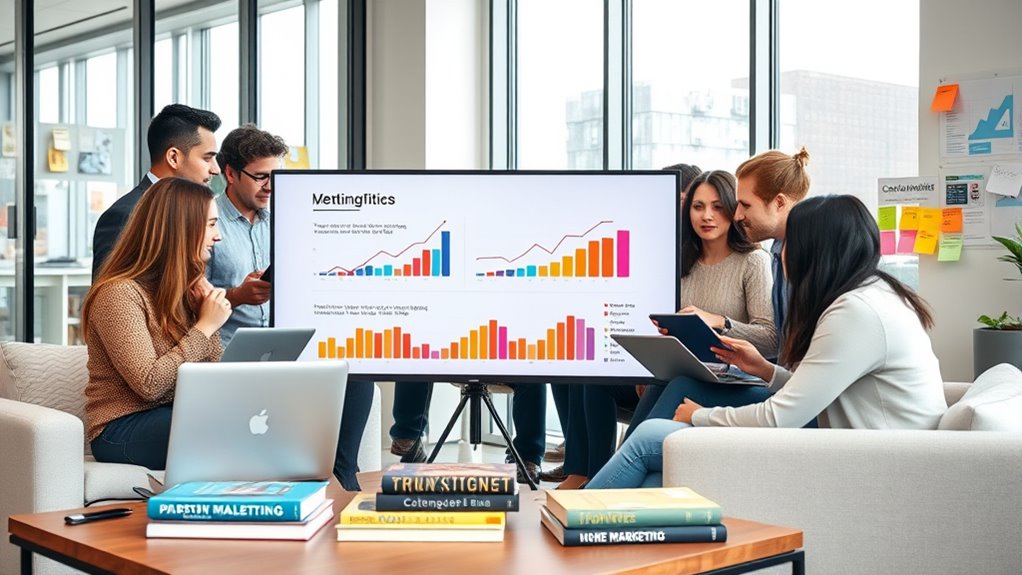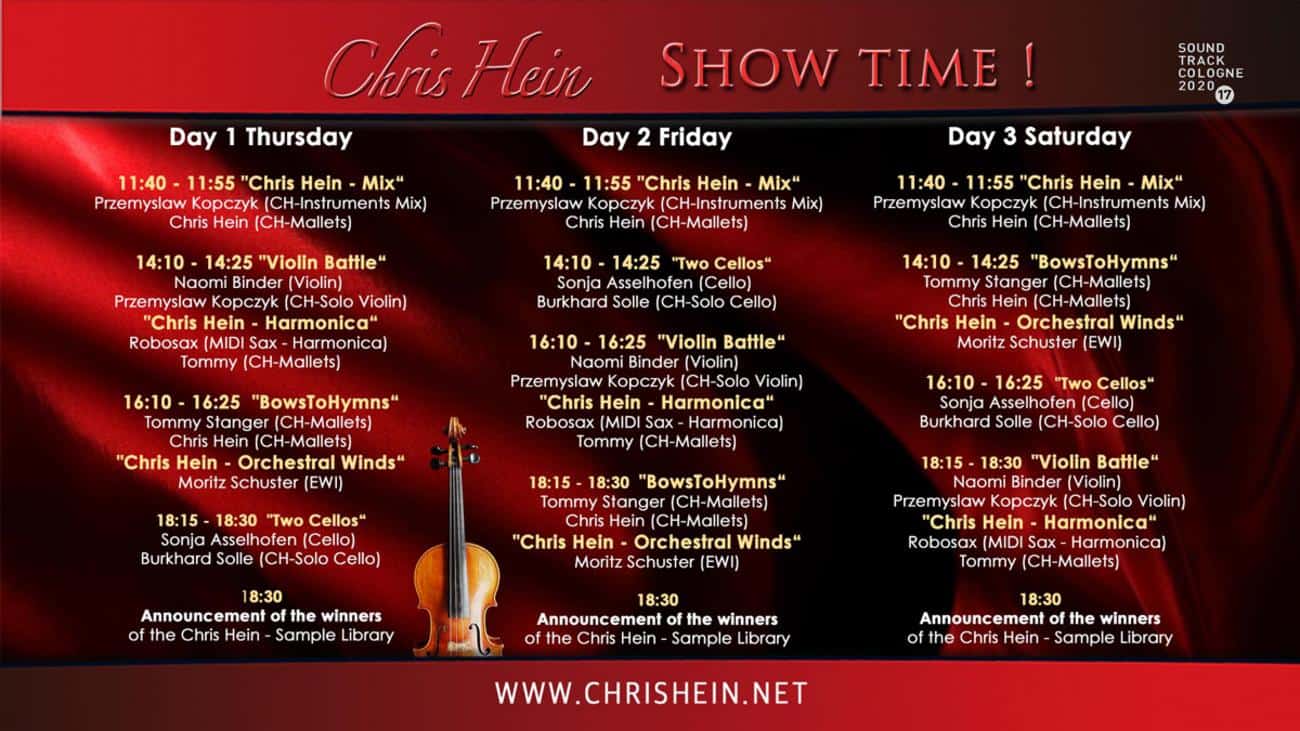To succeed in influencer marketing, you need to identify the right influencers based on tiers like mega, macro, micro, and nano, aligning their audience demographics with your target market. Choose platforms where your audience is most active, and focus on engaging content formats that resonate. Building strong connections with influencers will enhance authenticity. Don’t forget to negotiate clear partnership terms and metrics to measure success. Discover more strategies to maximize your campaign’s effectiveness and impact.
Key Takeaways
- Identify the right influencer tier (mega, macro, micro, nano) based on your target audience and campaign goals for effective collaboration.
- Analyze audience demographics and engagement rates to ensure alignment between influencers and your brand’s target market.
- Choose the appropriate platform (e.g., TikTok, Instagram, YouTube) that resonates with your audience for maximum impact.
- Develop engaging and authentic content tailored to the platform, incorporating storytelling and visuals to connect with audiences.
- Clearly negotiate partnership terms, including compensation, content requirements, and performance metrics to measure campaign success.
Understanding Influencer Tiers

When you dive into influencer marketing, understanding influencer tiers is crucial because they can significantly impact your campaign’s success.
Influencer tiers categorize individuals based on their follower count and engagement levels. Each tier—mega, macro, mid-level, micro, and nano—offers unique advantages for brands.
Influencer tiers, defined by follower count and engagement, provide distinct benefits for brands aiming to enhance their marketing strategy.
Mega influencers, like celebrities, provide massive reach but often have low engagement rates. Macro influencers, with 100,000 to 1 million followers, are more cost-effective and great for boosting visibility.
Mid-level influencers engage well with audiences, while micro influencers, having 1,000 to 50,000 followers, target niche markets effectively.
Finally, nano influencers, with under 1,000 followers, boast high engagement due to personal connections.
Choosing the right tier aligns your marketing strategy with specific goals, enhancing your overall campaign effectiveness.
Choosing the Right Platform for Your Campaign

When choosing the right platform for your campaign, consider its popularity among your target audience and the demographics that engage with it.
You’ll also want to think about which content formats are best suited for your message, as different platforms excel in different areas.
Matching these factors can significantly enhance your campaign’s effectiveness and reach.
Platform Popularity Analysis
Choosing the right platform for your influencer marketing campaign is crucial, especially given the rapid evolution of social media landscapes. TikTok has emerged as the leading channel, surpassing Instagram, which remains the best for ROI.
If you’re on a budget, Afluencer offers free access to a diverse influencer pool, while platforms like NeoReach and CreatorIQ provide advanced analytics to fine-tune your strategy. Consider ease of use—NeoReach is user-friendly, whereas CreatorIQ can be complex.
Additionally, platforms like Influencity are scalable, catering to brands of all sizes. Keep in mind that micro-influencers yield the highest engagement rates, so choose a platform that aligns with your goals and audience for maximum impact.
Audience Demographics Consideration
Understanding your audience is key to maximizing the effectiveness of your influencer marketing campaign. By considering age groups, gender, and location, you can choose the right influencer to resonate with your target demographic.
For instance, if you’re targeting Gen Z, look for influencers with high engagement rates in that age group. Gender demographics also matter; tailor your approach based on whether your audience is predominantly male or female. Additionally, practicing self-reflection can help you better understand your audience’s preferences and motivations, leading to more effective collaborations.
Furthermore, ensure the influencer’s niche aligns with your brand’s offerings to capture genuine interest. Analyzing audience size and engagement metrics will help you gauge the potential reach and impact of your campaign.
Ultimately, the right demographic alignment boosts your campaign’s relevance and effectiveness. Furthermore, analyzing audience size and engagement metrics are crucial for gauging the potential reach and impact of your campaign.
Content Format Suitability
Selecting the right platform for your influencer marketing campaign is crucial, as it directly impacts the effectiveness of your content.
Short-form videos thrive on TikTok and Instagram, capturing attention quickly and driving engagement. For in-depth explanations and reviews, YouTube is your go-to for long-form content. If real-time interaction is your goal, consider live streams on Facebook or YouTube. Engaging with user-generated content not only fosters community but also enhances authenticity, which is vital for successful campaigns.
User-generated content builds trust across all platforms, while multi-image posts on Instagram showcase products visually. Tailoring your content format to the platform is essential; beauty and fashion do well with visually appealing formats, while tech and gadgets benefit from detailed reviews. Additionally, freshly squeezed juices can be promoted through engaging content that highlights their health benefits and freshness. Always adapt your strategy based on audience feedback to maximize impact.
The Importance of Audience Engagement

While some may underestimate the power of audience engagement, it’s essential for the success of influencer marketing campaigns. High engagement rates reflect the trust and loyalty between influencers and their followers, showing that your message resonates.
You can measure this through key performance indicators like likes, comments, shares, and clicks, which help evaluate the effectiveness of your campaigns. Authentic content creation is crucial; when influencers share relatable stories, they forge stronger connections with their audience. Incorporating healthy meal options can also resonate well with audiences looking for lifestyle content.
Collaborating with micro-influencers can also boost engagement, as they often maintain closer relationships with their followers. By co-creating content that aligns with both the influencer’s and your brand’s messaging, you increase visibility and optimize engagement strategies. Additionally, fostering a positive mindset can enhance collaboration and creativity in these partnerships, leading to more impactful campaigns.
Aligning Influencers With Your Brand’s Niche

When selecting influencers for your campaigns, it’s crucial to prioritize niche relevance. Make sure their audience aligns with your target demographic to maximize engagement and impact. This alignment not only enhances authenticity but also strengthens your brand’s message. Additionally, consider the functional layout of the influencer’s content to ensure it complements your brand’s aesthetic and values. Influencers who promote sustainable fashion can resonate deeply with eco-conscious consumers, further amplifying your brand’s values and reach.
Importance of Niche Relevance
Understanding the importance of niche relevance in influencer marketing can significantly impact your brand’s success.
When you collaborate with influencers who align with your niche, you boost engagement rates, as their audience is genuinely interested in the content. This authenticity fosters trust, enhancing your brand’s perception. Additionally, using SEO strategies can help ensure that your influencer collaborations are easily discoverable online.
Moreover, targeted marketing efforts ensure your message reaches the right audience segments, making your campaigns more effective. Working with niche influencers can be more cost-efficient due to their higher engagement rates, allowing you to maximize your budget.
Additionally, shared goals often lead to long-term partnerships, further solidifying your brand’s presence. Prioritizing niche relevance is essential for creating impactful influencer collaborations that resonate with your target market. Furthermore, understanding customer acquisition techniques can enhance your influencer marketing strategy, driving even better results for your campaigns.
Assessing Audience Alignment
How can you ensure that your influencer partnerships genuinely resonate with your target audience? Start by analyzing the audience demographics of potential influencers. Understand their age, gender, and location to see if they match your brand’s target market.
Next, assess interest alignment; the influencer’s audience should share relevant interests to enhance campaign effectiveness. Engagement rates matter too; high engagement indicates a strong connection that can boost brand awareness.
Keep audience size in mind—sometimes smaller, engaged audiences outperform larger ones. Finally, utilize audience insights tools to dive deeper into their analytics and past performance.
Partner with influencers who align with your values for authenticity. This strategic approach leads to meaningful collaborations and successful campaigns.
Negotiating Effective Partnership Terms

Negotiating effective partnership terms is crucial for ensuring a successful influencer marketing campaign. Start by discussing compensation models, whether it’s a paid partnership, affiliate marketing, or gifting.
Clearly outline content requirements, specifying if you need sponsored posts or product reviews. Establish the duration and scope of the partnership to streamline planning.
It’s essential to set performance metrics, like engagement rates and sales, to measure success.
Make sure to draft a contractual framework that includes payment terms, termination clauses, and content ownership rights. Open communication channels help facilitate collaboration and address any concerns.
Align the influencer’s content style with your brand goals, ensuring a mutually beneficial partnership that can adapt as needed for long-term success.
Creating Authentic and Engaging Content

Creating authentic and engaging content is essential for capturing your audience’s attention and fostering a genuine connection. Start by brainstorming topics that resonate with your target audience, using keyword research to optimize for search engines.
Incorporate storytelling techniques, like the Hero’s Journey, to craft compelling narratives. Maintain a conversational tone to build rapport and evoke emotions through your storytelling.
Visual content, such as infographics and high-quality images, can enhance engagement significantly. Encourage audience interaction with clear calls to action and respond to comments to foster discussions.
Lastly, ensure your content aligns with your brand’s messaging to maintain consistency. By focusing on authenticity, you’ll create connections that drive engagement and strengthen your influencer marketing efforts.
Metrics for Measuring Influencer Marketing Success

Measuring the success of your influencer marketing campaigns is crucial for understanding their impact and optimizing future efforts. Start by tracking reach and impressions; reach shows how many unique people see your content, while impressions indicate how often it’s displayed. Both metrics are essential for gauging brand awareness.
Next, look at engagement indicators like likes and reactions, which reveal how well the influencer connects with their audience. Follower growth is another key metric, as it reflects your campaign’s ability to attract new audiences.
Additionally, monitor clicks and sessions to assess website traffic. Finally, conversions and ROI will help you measure the direct financial impact of your campaigns, ensuring you understand their overall effectiveness.
Optimizing Campaigns With AI Tools

As you seek to enhance your influencer marketing campaigns, leveraging AI tools can significantly streamline your processes and improve outcomes.
AI-powered influencer discovery tools analyze vast social media data, helping you identify influencers who align with your brand values and target audience. Advanced filtering options allow you to pinpoint influencers based on interests, past collaborations, and credibility.
With data-driven decision-making, you can assess engagement rates and audience demographics to ensure strategic partnerships that maximize ROI.
Efficient campaign management tools automate workflows from content approvals to post-campaign analysis, saving you time and enhancing effectiveness.
Integrating Influencers Across Multiple Channels

AI tools can streamline your influencer marketing efforts, but integrating influencers across multiple channels takes your strategy to the next level.
By using influencer content in paid advertising, you create relatable ads that perform well. Incorporating testimonials in your email campaigns boosts engagement and click-through rates.
Amplify your reach by reposting influencer content on your brand’s social media channels, ensuring a unified customer experience with consistent messaging. Influencers can also serve as spokespeople, generating earned media placements.
An omnichannel approach enhances brand recall and increases conversion opportunities, leveraging the diverse audiences influencers can reach. Collaborating with a variety of creators enriches your brand’s narrative, making your marketing more effective and authentic.
Future Trends in Influencer Marketing

While the influencer marketing landscape continues to evolve, several future trends are shaping its trajectory.
You’ll notice the rise of micro and nano influencers, who foster tight-knit communities and high engagement. Authenticity and transparency are crucial now; audiences crave genuine content over polished ads.
AI influencers are on the rise, offering brands consistent messaging, while augmented reality enhances product experiences.
B2B influencer marketing is growing, particularly on platforms like LinkedIn, targeting industry experts.
Sustainability’s becoming a priority, with influencers opting for brands that support social causes.
Data-driven campaigns will dominate, allowing real-time monitoring and fraud detection.
Long-term partnerships will also emerge, fostering deeper connections between brands and influencers for mutually beneficial relationships.
Frequently Asked Questions
How Do I Find Nano-Influencers in My Niche?
To find nano-influencers in your niche, start by searching social media platforms using relevant hashtags.
You can also explore influencer platforms that filter by niche and engagement rates.
Leverage your existing network for referrals, and keep an eye on industry discussions through social listening.
Don’t forget to check your loyal customers or active followers; they might be great nano-influencers who already resonate with your brand values.
What Are Common Compensation Models for Influencers?
When you think about compensating influencers, you might believe money’s the only way, but that’s not true!
Common models include flat-rate payments, where you pay a fixed fee for posts, and performance-based payments, where influencers earn from sales they generate.
You can also consider non-monetary options, like gifting products or offering store credit.
Hybrid models combine these, allowing you to tailor compensation to fit your campaign’s goals and budget.
How Can I Ensure Authenticity in Influencer Partnerships?
To ensure authenticity in influencer partnerships, align your brand values with those of the influencer.
Prioritize transparency by disclosing sponsored content, which builds trust with your audience.
Give influencers creative freedom to express their unique voice while staying within brand guidelines.
Foster long-term relationships to deepen connections and demonstrate commitment.
Finally, engage with the influencer’s audience genuinely, creating emotional bonds that enhance credibility and relatability.
What Tools Can Help Track Influencer Campaign Performance?
Did you know that 49% of consumers depend on influencer recommendations for their purchasing decisions?
To track influencer campaign performance effectively, you can use tools like Socialinsider for real-time metrics and comprehensive reporting, or Sprout Social for content management and performance analytics.
HypeAuditor’s AI capabilities help assess audience authenticity, while Traackr offers budget tracking and deep insights.
These tools will ensure you maximize your campaign’s effectiveness and ROI.
How Do I Approach Influencers for Collaboration?
To approach influencers for collaboration, start by following them on social media and engaging with their content.
When you reach out, personalize your message, highlighting mutual benefits and campaign details. Make sure to discuss compensation clearly and encourage their creative freedom.
Tailor your proposal to align with their interests, offering unique incentives to make the collaboration appealing.
Establish clear goals to ensure both you and the influencer are on the same page.
Conclusion
In the ever-changing landscape of influencer marketing, you hold the compass to navigate success. By choosing the right partners and platforms, you can create campaigns that resonate like a well-tuned orchestra. Remember, it’s not just about numbers; it’s about genuine connections and storytelling. As you venture into this exciting realm, keep your eyes on emerging trends and fresh strategies. With the right approach, you’ll turn collaborations into a symphony of brand loyalty and growth.










